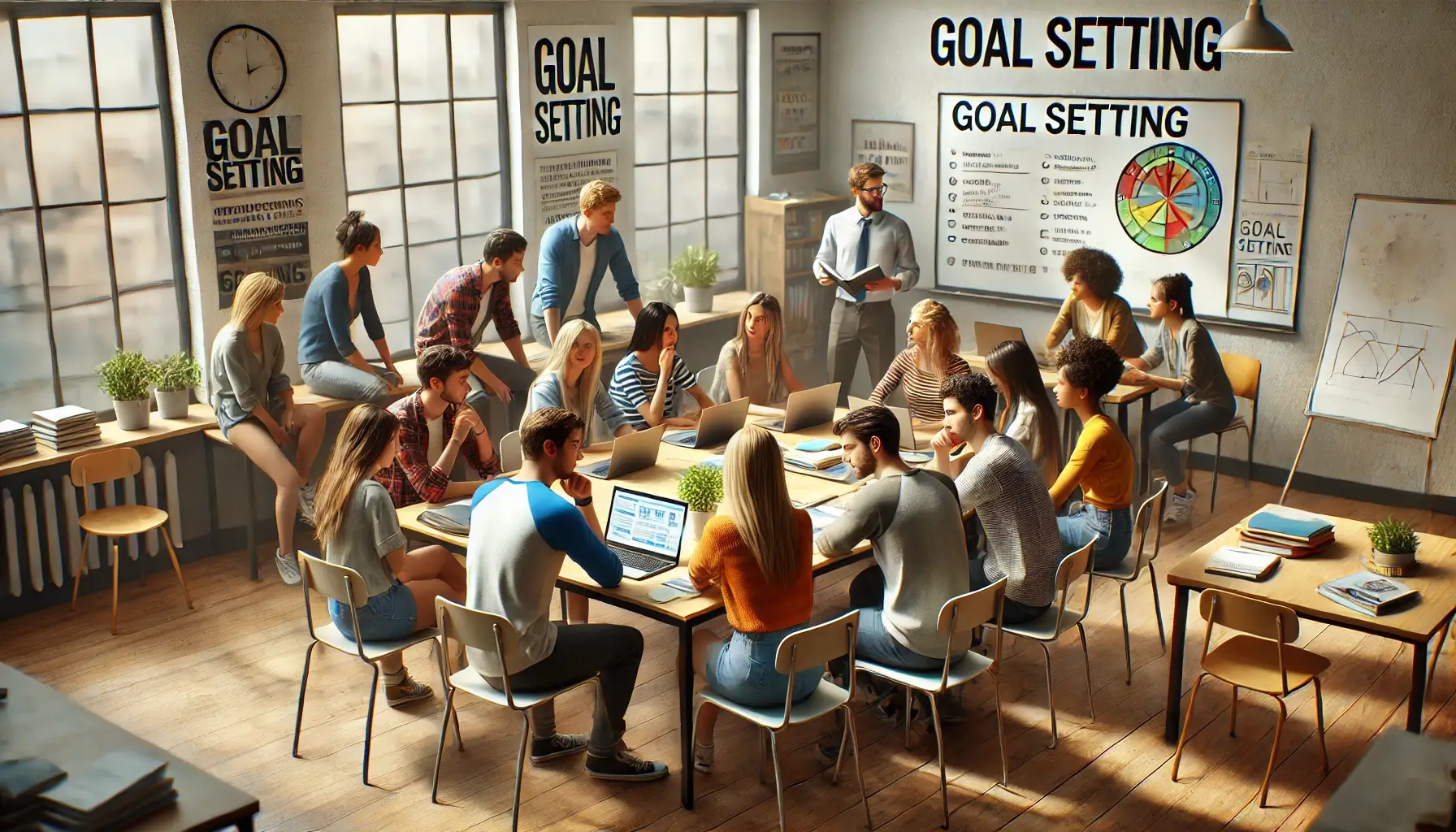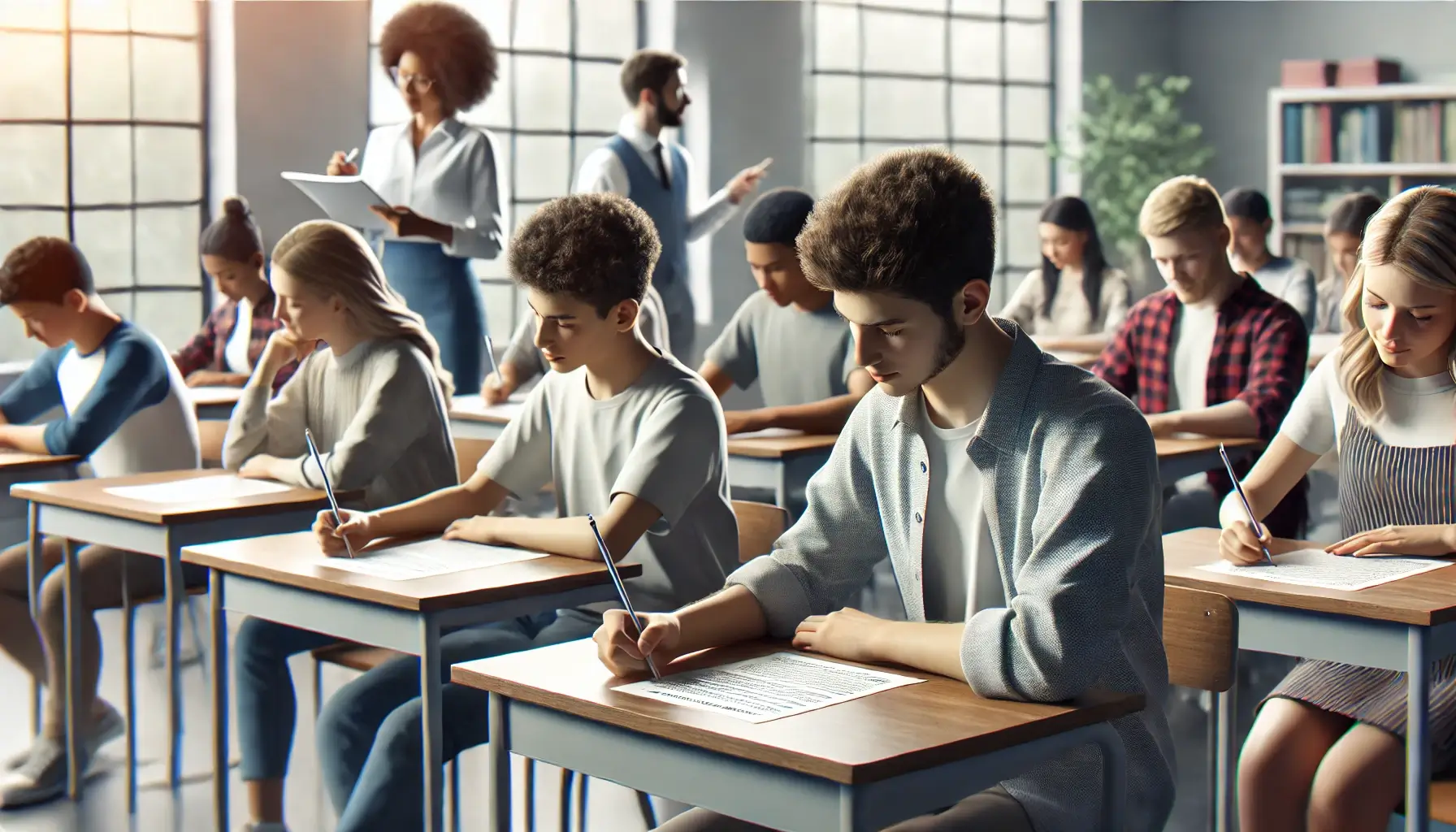Smart Goal Setting Graphic Organizer: A Guide for Students

Introduction

Setting and achieving goals is crucial for personal and professional development. One effective method to enhance goal setting is through the use of goal-setting graphic organizers. These tools offer a structured way to outline objectives, action plans, and progress tracking, making the goal-setting process more organized and manageable.
Graphic organizers provide a visual representation of goals, which can help in clearly defining and breaking them down into actionable steps. They serve as a constant reminder of what needs to be accomplished, thereby keeping you focused and motivated. Moreover, they facilitate regular progress tracking, which is essential for timely adjustments and improvements.
In this article, we will explore the concept of goal-setting graphic organizers, their benefits, and how they can be effectively used. We will also provide detailed steps on creating and utilizing these organizers, along with real-world examples and resources.
What is a Goal Setting Graphic Organizer?
A goal-setting graphic organizer is a visual tool that helps individuals plan and achieve their goals. It lays out goals in a structured format, breaking them down into smaller, manageable tasks. This approach makes it easier to understand and accomplish objectives.
Purpose and Benefits
The primary purpose of a goal-setting graphic organizer is to provide clarity and direction. By visually mapping out goals, individuals can see the steps needed to reach their objectives, which enhances focus and organization. Some benefits include improved clarity, better planning, and increased motivation to complete tasks. For more information on goal-setting graphic organizers, visit Edutopia.com.
How a Goal Setting Graphic Organizer Can Help Students
Students can greatly benefit from using graphic organizers. These tools help students visualize their goals, making them more tangible and easier to achieve. By breaking down goals into smaller tasks, students can focus better and stay organized, leading to improved academic performance and personal growth. For further reading on goal setting and planning, refer to the article on Goalsetting.online.
Components of a Comprehensive Goal Setting Graphic Organizer
- Goal Statement: Clearly defines the objective.
- Action Steps: Lists the steps required to achieve the goal.
- Deadlines: Specifies the timeframe for each step.
- Resources Needed: Identifies any materials or support required.
- Reflection: Allows for review and assessment of progress.
How to Effectively Use a Goal Setting Worksheet in the Classroom
Step-by-Step Guide to Implementing a Goal Setting Worksheet
Implementing a goal-setting worksheet in the classroom can significantly enhance students' ability to set and achieve their objectives. Here is a step-by-step guide for teachers:
- Introduce the Concept: Explain what a goal-setting worksheet is and its importance. Discuss how it can help students plan and achieve their goals.
- Define Goals: Guide students in defining clear, specific goals. Ensure these goals are achievable within a given timeframe.
- Break Down Goals: Help students break down their goals into smaller, manageable tasks. This makes it easier to track progress and stay motivated.
- Set Deadlines: Encourage students to set realistic deadlines for each task. This helps in maintaining a steady pace towards goal achievement.
- Track Progress: Regularly review the progress with students. Adjust the plan if necessary to keep them on track.
- Reflect and Assess: Allow time for students to reflect on their progress and assess what worked well and what didn't. This step is crucial for continuous improvement.
For more detailed information, refer to the article on Goalsetting.online.
Tips for Using Goal Setting Worksheets with Different Grades
Using goal-setting worksheets effectively requires adapting them to suit different grade levels. Here are some tips:
- Elementary Grades: Use simple and colorful worksheets with visual aids. Focus on short-term goals to keep younger students engaged.
- Middle School: Introduce more detailed worksheets that include space for action steps and deadlines. Encourage students to set medium-term goals.
- High School: Use comprehensive worksheets that allow for long-term goal setting. Include sections for resources needed and reflections.
Printable vs. Digital Goal Setting Worksheets: Which One to Choose?
Choosing between printable and digital goal-setting worksheets depends on the specific needs and resources of your classroom.
- Printable Worksheets: These are easy to distribute and can be used anywhere, making them ideal for classrooms without regular access to digital devices. They also allow for personal touches, such as drawings and hand-written notes.
- Digital Worksheets: These are versatile and can be easily edited and updated. They are ideal for tech-savvy classrooms where students are comfortable using digital tools.
For more information on this topic, visit Parade.com.
Why Are SMART Goals Important in Goal Setting Activities?

Defining SMART Goals in the Context of Goal Setting
SMART goals are essential in goal-setting activities because they provide a clear and structured framework for achieving objectives. The SMART acronym stands for Specific, Measurable, Achievable, Relevant, and Time-bound. This method ensures that goals are well-defined and realistic, making it easier to track progress and achieve success.
- Specific: Goals should be clear and specific to avoid any confusion about what is expected.
- Measurable: Goals need to be measurable to track progress and know when they are achieved.
- Achievable: Goals should be realistic and attainable within the given resources and time.
- Relevant: Goals must align with broader objectives and be worthwhile.
- Time-bound: Goals need a deadline to create a sense of urgency and prompt action.
For a deeper understanding of SMART goals, refer to the article on Goalsetting.online.
How to Guide Students in Writing SMART Goals
Helping students write SMART goals can significantly improve their goal-setting skills. Here are some tips:
- Teach the SMART Criteria: Begin by explaining what each letter in SMART stands for and its importance.
- Provide Examples: Show examples of both SMART and non-SMART goals to highlight the differences.
- Practice Together: Work with students to create a few SMART goals collectively.
- Individual Goal Setting: Encourage students to write their own SMART goals, offering guidance and feedback.
For additional techniques, refer to the article on Goalsetting.online.
Examples of SMART Goals in Academic Context
Here are a few examples of SMART goals tailored to different academic subjects:
- Math: "Improve my algebra grade from a B to an A by the end of the semester by attending after-school tutoring sessions twice a week and completing all assigned homework."
- Social Studies: "Research and write a 5-page report on the American Revolution, including at least three primary sources, by the end of the month."
- Science: "Complete the science fair project on renewable energy sources by March 15, conducting at least three experiments and documenting the results."
For more examples of SMART goals in an academic context, check the article on Indeed.com.
Inspirational Goal Setting Graphic Organizer Templates and Resources
Free Goal Setting Graphic Organizers You Can Download
There are many free resources available online for goal-setting graphic organizers. These templates are designed to help you create and achieve your goals effectively. They often include sections for writing down goals, action steps, deadlines, and reflections.For a collection of free resources, visit Goalsetting.online.
Top Bundles and Templates Available on TPT
Teachers Pay Teachers (TPT) is a popular marketplace for educational resources, including goal-setting graphic organizers. Here are some of the top bundles and templates available:
- Ultimate Goal Setting Bundle: Includes multiple templates for different grades and subjects.
- Student Goal Setting Worksheet Pack: Features a variety of worksheets designed to help students set and track their goals.
- SMART Goals Template: A template specifically designed to help students create SMART goals.
These resources are excellent for educators looking to enhance their goal-setting activities with high-quality, ready-made materials.
Using Canva to Create a Custom Goal Setting Graphic Organizer
Canva is a user-friendly graphic design tool that can be used to create custom goal-setting graphic organizers. Here's a step-by-step guide:
- Sign Up for Canva: If you don't already have an account, sign up at Canva.com.
- Choose a Template: Browse through the available templates and choose one that fits your needs.
- Customize the Template: Use Canva's drag-and-drop interface to add your own text, images, and design elements.
- Download and Print: Once you're satisfied with your design, download it in your preferred format and print it out for use.
How to Reflect on and Assess Student Goals

Encouraging Students to Reflect on Their Goals
Reflection is a critical part of goal setting. It allows students to think about their progress, understand what worked, and identify areas for improvement. Here are some methods to encourage students to reflect:
- Journaling: Have students keep a journal to write about their progress and thoughts on their goals.
- Group Discussions: Organize group discussions where students can share their experiences and learn from each other.
- Self-Assessment: Provide self-assessment tools to help students evaluate their own progress.
Methods for Assessing Progress and Mastery of Goals
Teachers can use various techniques to assess student progress and mastery of goals:
- Formative Assessments: Use quizzes, assignments, and class activities to gauge understanding and progress.
- Summative Assessments: Conduct tests and projects to evaluate the overall achievement of goals.
- Regular Check-Ins: Schedule regular one-on-one check-ins with students to discuss their progress and provide feedback.
For more strategies on goal setting and planning, refer to the article on Goalsetting.online.
Steps to Adjust and Reset Goals as Needed
Flexibility is key in goal setting. Sometimes, goals need to be adjusted based on progress or changing circumstances. Here are some steps to adjust and reset goals:
- Review Progress: Regularly review the progress towards the goals.
- Identify Obstacles: Identify any obstacles that are hindering progress.
- Adjust Goals: Modify the goals to make them more achievable if necessary.
- Set New Deadlines: Adjust deadlines to ensure continuous progress.
- Reflect and Revise: Encourage students to reflect on what changes were made and why, and revise their approach if needed.
These steps ensure that goals remain relevant and attainable, keeping students motivated and on track.
Conclusion
As the academic year begins, using graphic organizers is a great way to help your students meet their goals. These tools guide students through the process of breaking down goals into manageable steps. Whether it's for independent reading, spelling, or writing a paper, a graphic organizer can be a valuable resource.
"My Vision Board" and other vision boards help shape a positive mindset, allowing students to brainstorm and set new goals. Using a planner or a S.M.A.R.T. goal sheet, students can work toward their objectives effectively. Teachers can find editable resources on Teacherspayteachers.com (TPT) that provide no-prep, easy-to-follow templates. These include sentence starters and sample descriptions that can guide students through their tasks.
Printable PDFs and posters are available as freebie resources that students can print and use every month of the year. These materials are not only great as a brainstorming guide but also as a tool for breaking down goals into manageable steps. The first document students use can set the tone for their entire school year.
In collaborative settings, such as a medically-focused lesson where teachers and students collaborated together, these resources have proven effective. One teacher mentioned, "Glad she gave this a try; it really helped my students think smarter and work toward their goals."
Using graphic organizers is an excellent strategy to guide students through their academic journey. They provide a structured and visual method to help students achieve their goals and succeed in their studies.
FAQs
Can Goal Setting Graphic Organizers Be Used for All Subjects?
Yes, goal-setting graphic organizers are versatile and can be used across all subjects. They help students set clear objectives, outline action steps, and track their progress, regardless of the subject. Whether it's math, science, social studies, or language arts, these organizers can be adapted to suit different academic needs and goals.
How Often Should Goal Setting Activities Be Conducted?
It is recommended to conduct goal-setting activities regularly to keep students focused and motivated. Monthly reviews are ideal as they provide enough time to make significant progress while allowing for frequent adjustments. Regular goal-setting sessions help maintain momentum and ensure that students stay on track.
Are There Goal Setting Resources for Special Education Students?
Yes, there are many resources available for special education students to help them set and achieve their goals. These resources are designed to be flexible and adaptable to meet the unique needs of each student. They include differentiated instruction techniques and individualized goal-setting tools that cater to various learning styles and abilities.
What Are Some Printable Goal Setting Templates?
Printable goal-setting templates are widely available and can be very useful. These templates often include sections for setting goals, outlining action steps, tracking progress, and reflecting on achievements. For a collection of printable templates, visit GoalSetting.Online.
How Can Parents Support Goal Setting at Home?
Parents can play a crucial role in supporting goal-setting activities at home. Here are some tips:
- Create a Goal-Setting Routine: Establish a regular time for goal-setting activities.
- Provide Encouragement: Encourage your child to set realistic and achievable goals.
- Monitor Progress: Help track progress and provide feedback.
- Celebrate Successes: Acknowledge and celebrate when goals are achieved to motivate continued effort.